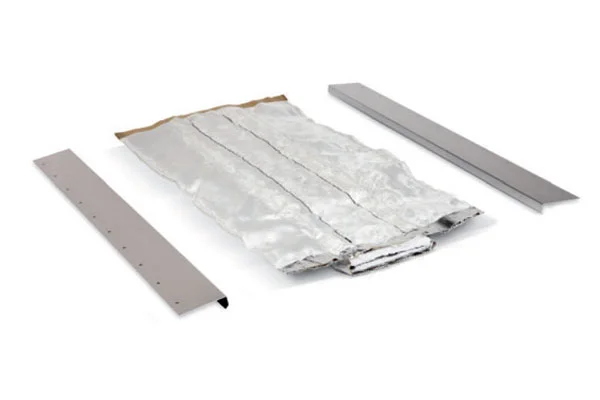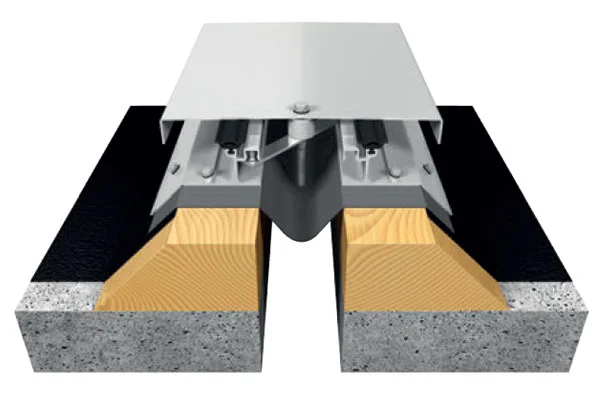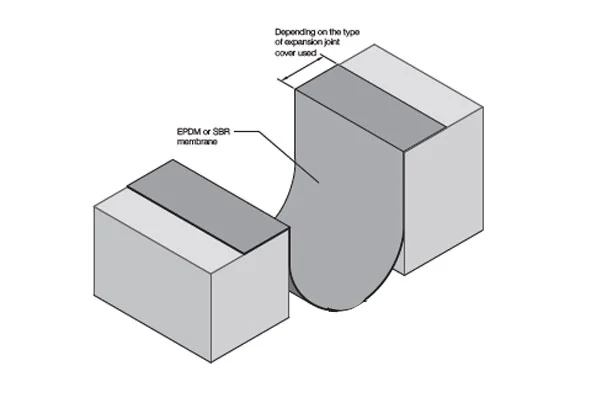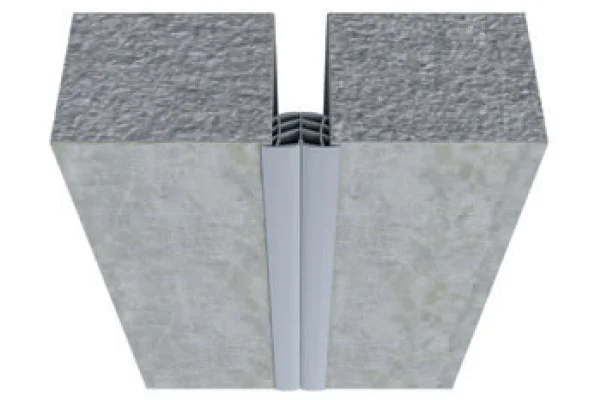Most homeowners don’t think much about what’s happening behind their basement walls or beneath their floors until they start noticing damp odors, peeling paint, or even a thin line of mold creeping along a corner. But by the time those signs appear, hidden moisture may have already been undermining the very structure of your home.
Basement moisture is one of the most common and destructive problems homeowners in Maryland, Washington, D.C., and Virginia face. The Mid-Atlantic climate brings humid summers, heavy rainfall, and seasonal flooding, which can create the perfect storm for water intrusion. Understanding how moisture moves, where it hides, and how professionals detect and eliminate it is key to protecting your investment and your family’s health.
 The Silent Enemy Beneath Your Home
The Silent Enemy Beneath Your Home
Basements are naturally prone to moisture because they sit below ground level, surrounded by soil that constantly holds and releases water. During heavy rains, the soil becomes saturated and pushes water against your foundation walls, a force known as hydrostatic pressure.
Even if your basement appears dry, this pressure can cause tiny cracks in the concrete to widen over time. Water doesn’t always need a visible opening; it can seep through porous materials, evaporate, and then condense elsewhere, hiding behind insulation, drywall, or flooring.
What makes hidden basement moisture so dangerous is its slow and steady damage. Unlike a flood that demands immediate attention, moisture can quietly compromise your foundation and indoor air quality for years before the symptoms become obvious.
Where Hidden Moisture Hides
Many homeowners are surprised to learn that the majority of basement moisture issues are not caused by standing water, but by humidity, vapor transmission, and minor leaks that go unnoticed. Here are some of the most common areas where moisture lurks undetected:
-
Behind Finished Walls: Insulation can trap damp air and condensation between the foundation wall and drywall, creating a hidden breeding ground for mold.
-
Under Flooring: Vinyl, laminate, or carpet laid over concrete can conceal moisture buildup that slowly deteriorates the floor and subfloor.
-
Basement Corners and Joints: Water tends to accumulate where the wall meets the floor, a weak point where cracks often form.
-
Around Utility Penetrations: Openings for plumbing, HVAC lines, or electrical conduits can allow water vapor or small leaks to enter.
-
Under Stored Items: Boxes, furniture, and storage bins pressed against exterior walls can trap moisture and block airflow, accelerating mold growth.
How Moisture Damages Your Foundation
The consequences of hidden moisture extend far beyond cosmetic damage. Over time, even small amounts of water can alter the chemical structure of concrete and weaken its load-bearing capacity.
-
Erosion of Concrete and Mortar: Water carries dissolved minerals that react with concrete, slowly breaking down its binding agents. This process can lead to surface flaking and deeper cracks.
-
Corrosion of Reinforcement Steel: In poured concrete foundations, steel rebar adds strength. When moisture reaches it, corrosion begins, expanding the metal and causing the surrounding concrete to crack and spall.
-
Freeze-Thaw Cycles: In Maryland’s colder months, any trapped water inside cracks expands when it freezes, pushing the foundation material apart. When it thaws, it leaves even larger gaps for more moisture to enter.
-
Pressure from Expansive Soils: Moisture-rich clay soils, common throughout the region, expand and contract dramatically with changes in moisture content, placing constant stress on basement walls.
Over time, this combination of chemical and physical stress can cause bowing walls, floor cracks, and misaligned door frames visible signs that your home’s structure is in danger.
The Invisible Impact on Air Quality
Hidden basement moisture doesn’t just threaten your foundation; it also affects the air your family breathes. Studies by the Environmental Protection Agency (EPA) show that up to 50% of the air on the first floor of a home originates in the basement or crawl space.
When moisture lingers below your home, it creates ideal conditions for:
-
Mold and Mildew Growth: These fungi release microscopic spores that can trigger allergies, asthma, and respiratory irritation.
-
Dust Mites and Bacteria: Damp conditions support colonies of microorganisms that affect air quality and health.
-
Musty Odors: That unmistakable “basement smell” comes from microbial volatile organic compounds (MVOCs) gases produced by mold metabolism.
For families in humid climates like Maryland and D.C., the combination of high humidity and poorly ventilated basements can turn a small moisture problem into a health hazard.
Warning Signs of Hidden Moisture
Before moisture damage becomes extensive, a few subtle clues often appear. Homeowners should regularly check for:
-
Persistent musty odors even after cleaning
-
Efflorescence (white, chalky residue) on walls
-
Warped baseboards, flooring, or furniture near the basement walls
-
Cold, clammy air despite proper heating
-
Rust on metal fixtures or shelving
-
Peeling paint or bubbling wall surfaces
These symptoms indicate that moisture is present even if there’s no visible water. If you notice one or more of these signs, it’s time to call a professional waterproofing company for a comprehensive inspection.
Professional Detection: How AquaGuard Finds What You Can’t See
At AquaGuard Waterproofing, identifying hidden moisture is both a science and an art. Our trained technicians use advanced diagnostic tools and years of experience to pinpoint the exact sources of moisture. Common methods include:
-
Infrared Thermography: Detects temperature variations that indicate trapped moisture behind walls or floors.
-
Moisture Meters and Hygrometers: Measure the relative humidity and moisture content in building materials.
-
Foundation Crack Inspection: Locates hairline cracks that may allow seepage even without visible leaks.
-
Drainage and Grading Assessment: Evaluates how exterior water flows toward or away from your home.
-
Sump Pump and Discharge Line Check: Ensures that existing waterproofing systems are functioning properly.
By combining these tools with a detailed visual inspection, AquaGuard can uncover hidden threats before they become costly disasters.
The Professional Approach to Basement Moisture Repair
Once the source of the problem is identified, a tailored waterproofing solution can be designed. AquaGuard Waterproofing offers several methods, depending on the severity and cause of the issue:
-
Interior Drainage Systems: These systems collect and redirect water that seeps into the basement toward a sump pump, keeping the area dry.
-
Sump Pump Installation and Battery Backup Systems: A reliable pump system with battery backup ensures water removal even during power outages critical for storm-prone Maryland summers.
-
Foundation Crack Repair: Using advanced epoxy or polyurethane injection, cracks are sealed to prevent further water intrusion and structural weakening.
-
Exterior Waterproofing Membranes: For homes with severe seepage, applying a waterproof membrane on the exterior foundation wall can provide a permanent barrier.
-
Dehumidification and Ventilation Systems: Solutions like the EZ Breathe Ventilation System help control humidity and improve overall air quality.
Each solution is designed for long-term protection, not just short-term fixes, ensuring your basement remains dry, safe, and healthy year-round.
Why DIY Moisture Control Isn’t Enough
Many homeowners try to solve basement dampness with store-bought dehumidifiers, sealants, or paint. While these products can provide temporary relief, they don’t address the root cause water intrusion through foundation cracks, poor drainage, or hydrostatic pressure.
DIY methods often fail because they treat symptoms, not sources. Without professional diagnostics and permanent waterproofing, moisture will often return worse than before. Hiring experts like AquaGuard ensures that every factor, from soil grading to drainage installation, is properly evaluated and repaired by trained professionals who understand local soil conditions and weather patterns.
Long-Term Benefits of Professional Basement Waterproofing

-
Stronger Foundation Integrity: Prevents cracks and bowing walls from worsening.
-
Healthier Indoor Air Quality: Reduces allergens, mold, and musty odors.
-
Energy Efficiency: Drier air makes heating and cooling systems run more efficiently.
-
Increased Property Value: Homes with documented waterproofing and structural protection are more attractive to buyers.
-
Peace of Mind: Knowing your basement is protected against heavy rainfall, humidity, and flooding year after year.
AquaGuard Waterproofing: The Experts Beneath It All
For over three decades, AquaGuard Waterproofing has been serving homeowners across Maryland, Washington D.C., and Virginia, providing reliable, long-lasting solutions to basement moisture and foundation problems. Our team understands the unique soil composition, climate conditions, and building structures of the Mid-Atlantic region — allowing us to tailor every solution to your home’s specific needs.
Whether you’re dealing with a damp smell, visible cracks, or unexplained humidity, our experts can identify the source and fix it permanently.
Conclusion
Hidden basement moisture may seem harmless at first, but it’s one of the most destructive forces acting against your home. From eroding foundations to spreading mold spores, the damage often starts silently and ends expensively.
By working with AquaGuard Waterproofing, you gain more than just a dry basement; you gain long-term protection, healthier air, and a stronger home. Don’t wait for water damage to make itself visible. Schedule a professional inspection today and discover what’s lurking beneath before it costs you thousands tomorrow.








